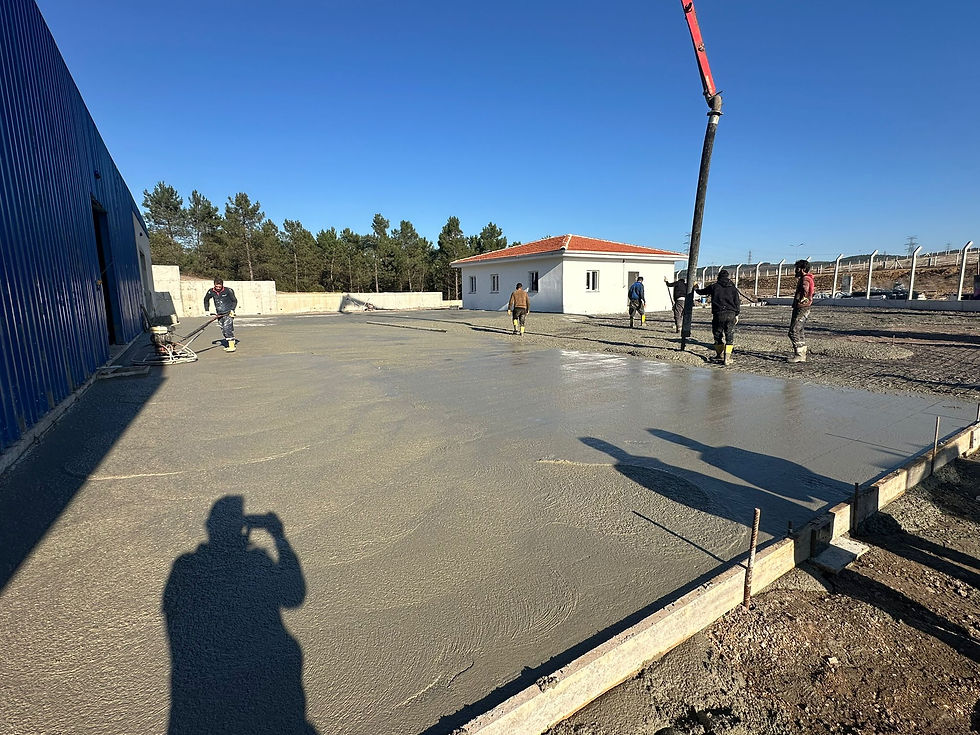Implementation of a 200.000 Sm3/hr capacity Natural Gas Pressure Reducing and Measurement station located in Gebze
- Okan Saçlı

- Oct 8
- 3 min read
Natural gas is one of the most important source of energy in the global energy market. It is a cleaner energy source compared to coal and oil, which makes it essential for reducing carbon emissions. Efficient management of natural gas distribution ensures safety and reliability. One of the most critical components in this process is the pressure reducing and measurement station (PRS/RMS). This blog post highlights the construction and implementation of a 200,000 Sm3/hr capacity natural gas pressure reducing and measurement station in Balcik - Gebze, with related construction phases of the project
Key Components of the PRS/RMS
The design of the natural gas pressure reducing and measurement station integrates several crucial parts:
Pressure Regulators: These devices reduce incoming high pressure gas (taken off from BOTAS main transmission lines) to the operators city grid medium pressure.
Flow Meters: Accurate measurement of gas flow is critical. These meters provide data on consumption, which assists in better management and billing. There are both mechanical and ultrasonic flow meters involved in the project
Safety Systems: Safety is crucial for any gas system. The PRS/RMS includes safety features like pressure relief valves and emergency shut-off systems to address leaks and pressure surges.
Control Systems: Advanced control systems monitor full PRS operations. Pressure, temperature, flow rate and c
alorific value of Natural Gas in continously monitored on real-time data, enhancing efficiency and operations.
Piping and Valves: The infrastructure comprises a network of pipes and valves designed to handle specific pressure and flow requirements. The diameter and material of the piping are chosen based on safety protocols and expected gas volumes.
Design, Implementation &Construction Process

Given the sloping terrain, retaining walls were designed to stabilize cuts/fills and establish level areas for the RMS and SCADA buildings.

We surveyed and staked out the plot boundaries, then execute cut/fill excavations to bring the site to the final construction level.

Site leveled to final elavation and excavation works completed for the SCADA building.

Foundation excavation works for the RMS shelter building and retaining walls.

Foundation formwork and rebar works for the retaining walls.

Retaining walls finished and the foundation and rebar works for the RMS shelter building.

Finished foundation works for the RMS shelter building and formwork and concrete works for the explosion protection wall which seperates the boiler room and the shelter mechanical skid room.

View of the construction site from a higher elevation, showing the retaining walls, the RMS shelter building and the foundation for the SCADA building in the background.

After the civil (concrete) related works for the RMS shelter building is completed, the mechanical skid is transferred to the site for alingments and installation.

Once the mechanical RMS skid is installed the steel construction works begins for the shelter building.

Roof cladding works in progress

Steel construction and facade cladding works after mechanical skid installation. The inlet (HP) and the outlet (MP) pipes and valves are seen in the photo.

After completion of the site infrasturcture works, field concrete works are in progress.

Survey works in progress to locate the take off point from the BOTAS high pressure pipeline.

Preparation works for the HOT TAP operation, where a take off valve is installed / welded on the HP gas line while the gas is flowing through the pipe.

Welding of the saddle for the hot tap operation.

High pressure supply line to the RMS after the hot tap take off point.

Finished boiler room photos.

Finished mechanical skid installation photos.

Finish site with RMS inlet and outlet pipes and relevant auxilarry modules such as cyclone filters, odorization units.

Finished site photos with site fencing, main entrance gate.
Summing It Up
The establishment of a 200,000 Sm3/hr capacity natural gas pressure reducing and measurement station in Balcik - Gebze significantly advances the region's energy infrastructure. By ensuring safe and efficient gas distribution, this project meets immediate demands and prepares the area for sustainable growth in the coming years.
The successful execution of this project highlights the importance of high-quality engineering and strategic planning in the energy sector. The experience gained from the Balcik - Gebze PRS/RMS can serve as a blueprint for similar projects globally, paving the way for a more efficient and sustainable energy landscape.





Comments